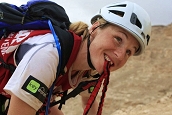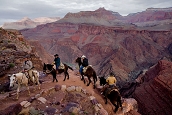My favorite fitness activities are strength training and running.
Strength training is the best means for improving muscular fitness, and running is one of the best exercises for improving cardiovascular fitness. I perform these purposeful physical activities on a regular basis throughout the year.
Although I actually enjoy doing my strength training and running workouts, I consider them as conditioning activities rather than recreational activities. My favorite recreational activities are biking and hiking.
While these are both effective ways to enhance muscular endurance and aerobic capacity, I view biking and hiking differently than strength training and running. These are weekly events that I do with my friends on Saturday mornings. Although we sometimes cycle at other locations, we typically meet for a 90-minute bike or hike. The weather conditions pretty much dictate our activity choice.
Although it is possible to hike on relatively level terrains or to continuously climb up one of the larger mountains in New Hampshire, we love the Blue Hills Skyline Trail because it provides a variety of uphill, downhill and level sections for a highly effective muscular and cardiovascular workout. The course that we typically take has seven good hills interspersed with less hilly segments.
The seven uphill ascents challenge both our leg muscles and our cardiovascular system. Our calf, quadriceps, hamstrings and gluteal muscles work hard to overcome the force of gravity as we move our bodies up the hill, and our heart and lungs work hard to supply our muscles with oxygen-rich blood and energy sources.
The seven downhill descents are much easier on our cardiovascular system because we are moving with gravity instead of against it. However, our calves, quadriceps, hamstrings and gluteal muscles also work hard on downhill terrain, as they must resist the force of gravity that would otherwise tumble us down the slopes.
During the level sections between the hills, we recover from the more stressful up and down efforts.
We approach our hikes as a type of interval training session, alternating harder and easier bouts of purposeful physical activity. Occasionally, we do a more structured and specific interval training hike using Big Blue, the ski slope, and the relatively short connecting trails.
Going up the big hill is a great muscular and cardiovascular workout, coming down the ski slope can be even more challenging for our leg muscles, and doing the level connecting trail allows us a pretty complete recovery before repeating the process.
We try to complete four cycles of this more intense interval hike, and we typically feel the effects the next day. This type of hiking is essentially as effective as other aerobic activities, and the views render it more enjoyable than treadmill walking or elliptical training.
For those who are less interested in another fitness session and simply want to enjoy a rewarding recreational activity, you can select trails that have less steep ascents and descents. You can also take breaks at appropriate points on your uphill and downhill climb.
Some general guidelines for safe and successful hiking include the following:
Use well-fitted footwear that provides for both foot mobility and ankle stability, because the trail surfaces are uneven in most places.
Be sure your shoes have good soles that grip rather than slip. We typically wear running shoes until the snow falls, then we use specifically designed hiking shoes for better control and greater traction.
On warmer days we hike in shorts and tee shirts, and on colder days we switch to sweatpants and sweatshirts, as well as gloves and headbands if necessary. Interestingly, you may not need to wear as much clothing as you might anticipate because the hills and trees block the wind and the climb elevate your body temperature. We dress relatively light and rarely feel cold during our hikes.
You won’t need food or supplements for a one- to two-hour hike, but you may want to carry some water to maintain a high level of hydration. This is an excellent idea regardless of the weather conditions, as you can lose a lot of water through perspiration on cool days as well as warm days.
It may be prudent to carry a cellphone for unforeseen emergencies. Keeping a couple Band-Aids in your pocket for occasional cuts, scrapes and scratches is another practical suggestion.
Stay on the trails as much as possible, and avoid walking in tall grassy areas where you could pick up a tick.
It is always best to hike with another person or a small groups of people, as camaraderie certainly enhances the hiking experience. This is especially true if you are new to hiking. Start with shorter and easier hikes, then progress gradually to longer and more challenging hikes.
Wayne L. Westcott, Ph.D., teaches exercise science at Quincy (Mass.) College and consults for the South Shore YMCA. He has written 24 books on fitness.










